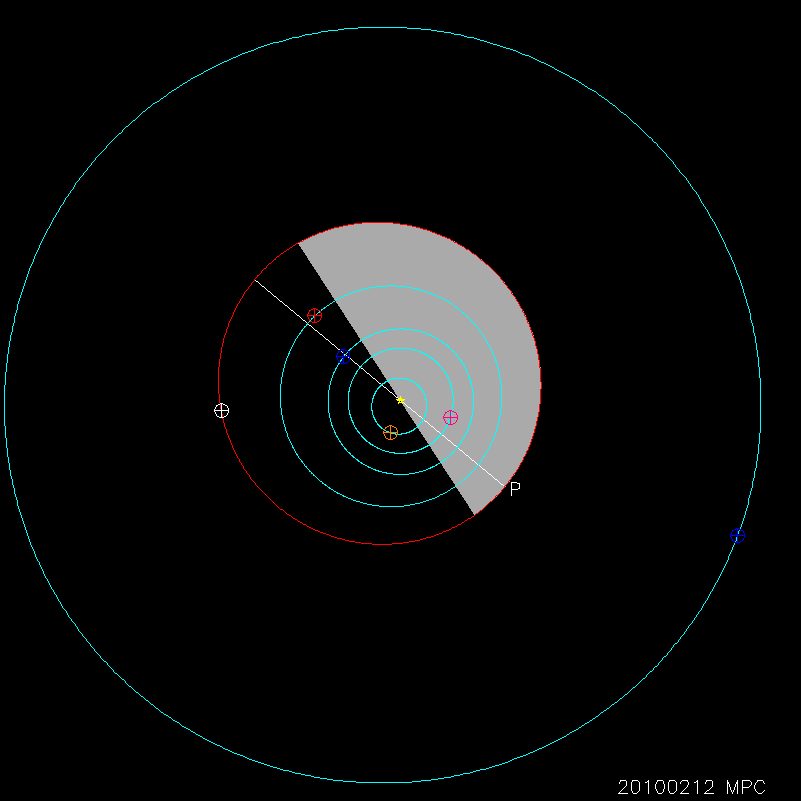(4150) Starr
Minor planet number 4150 has been named in honor of drummer and ex-Beatle Ringo Starr.The citation announcing the naming appeared on Minor Planet Circular 16248 (issued on 1990 Apr. 10), from which the following is extracted with permission:
(4150) Starr = 1984 QC1
Discovered 1984 Aug. 31 by B. A. Skiff at the Anderson Mesa Station of
the Lowell Observatory.
Named in honor of Ringo Starr (Richard Starkey: 1940-- ), a
Liverpudlian of lively personality and deadpan humor who occasionally sat
in as drummer with The Beatles during their early days in Hamburg. Ringo
actually joined the group in 1962, after the original drummer, Pete Best,
left. Ringo's solo career has encompassed several albums and a variety of
film roles.
Read about how minor planets are named.
About (4150) Starr
(4150) Starr is in a 3.34-year elliptical orbit around the sun ranging in distance from 278.5 million km (at perihelion, closest point to the sun) to 389.6 million km (at aphelion, furthest point from the sun).The next perihelion passage will occur on 2011 Apr. 3.8 UT.
The orbit is inclined by 3.2 degrees to the ecliptic plane (the plane of the earth's orbit about the sun).
There is little information on the physical properties of (4150) Starr. Even its diameter is uncertain--a range of 7 to 16 km is probable.
You will need a telescope to see this minor planet as its maximum brightness is some 1/1481 of the brightness of the faintest objects that can be seen with the unaided eye.
The diagram below show the orbit of (4150) Starr in relation to the major planets in the inner solar system.

This view of the inner solar system is seen from the north ecliptic pole. The sun is the yellow star at the center of the image. The blue orbits represent, in increasing distance from the center, the major planets Mercury, Venus, Earth, Mars and Jupiter. The position of each major planet at the date indicated at the bottom of the plot is shown by the large circled cross. The orbit of the minor planet is shown in red, with the location of the minor planet (at the date indicated at the bottom of the plot) shown as a white circled cross. From this vantage point the planets revolve around the sun in a counter clockwise direction. The vernal equinox is off to the right. The portion of the minor planet's orbit that is below the plane of the earth's orbit is shaded grey. The perihelion point of the minor planet's orbit is at the end of the white straight line through the sun indicated by "P".
Also available is information on provisional designations.
Where is (4150) Starr tonight? Customisable ephemerides are available.
Two CCD images (34 K) of Starr, showing its motion over a period of about an hour on 1997 May 30/31, are available. The images were taken by A. Martin and A. Böker of the Turtle Star Observatory and are reproduced here with permission.
Back to Rock & Roll Minor Planets
